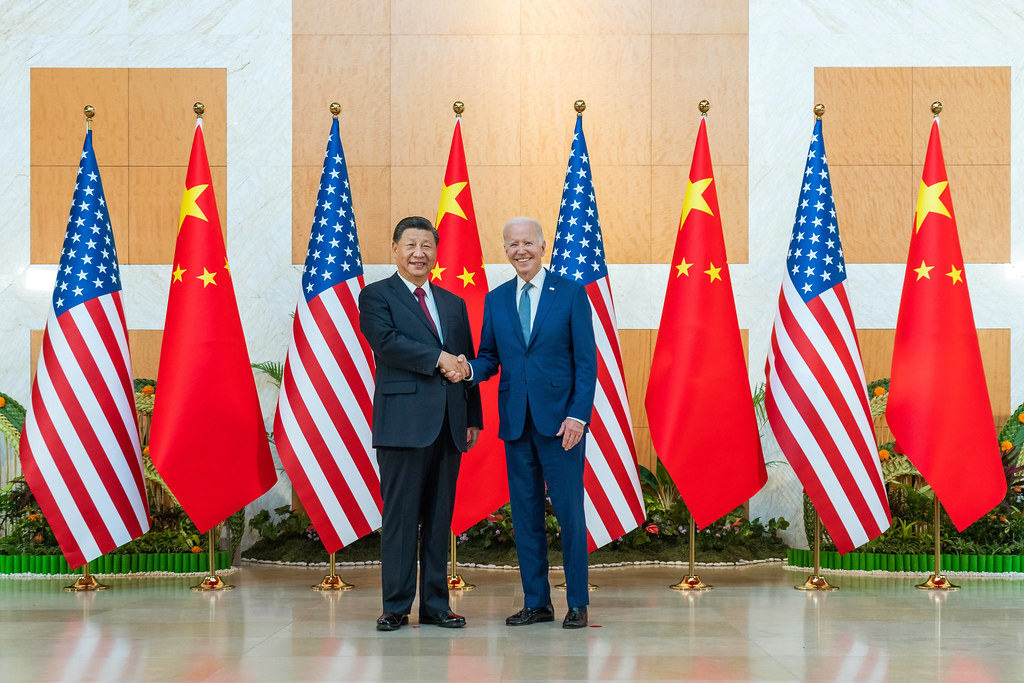
He’s even considering increasing tariff rates in certain sectors.
When President Biden first took office in 2021, importers launched a major push to urge the new commander-in-chief to lift tariffs on hundreds of billions of dollars of Chinese products that were issued by the Trump administration. For a time, it appeared that Biden was indeed planning to ease at least some of the tariffs, with Treasury Secretary Janet Yellen declaring that doing so was “worth considering” as part of the U.S.-China trade strategy.
Biden is now heading into his fourth year in office, and the tariffs remain in place. All eyes are now on the Office of the U.S. Trade Representative (USTR), which is undertaking a mandatory review of all the tariffs, a process that began back in 2022. Importers have hoped that the administration will use the review process to revoke the tariffs, while the Alliance for American Manufacturing and others have called upon Biden to keep them in place.
Now Axios reports that the president is ready to issue his decision, and he is leaning toward maintaining the tariffs. The administration is even considering increasing tariffs on things like electric vehicles and critical minerals, part of a strategy to ensure the United States can compete with China on the global stage.
Part of the reasoning for Biden’s [likely] decision has to do with the coming election, Axios argues.
Biden wants to “put his stamp on Trump’s tariffs and make the case that his approach is smarter and more strategic,” writes Hans Nichols. “He also wants to show a tough stance toward China to undermine any attempts by Trump to cast Biden as ‘soft on the Asian powerhouse, as Trump did in 2020.”
That’s certainly part of the picture, but it’s not all of it. Tensions between the United States and China remain high, and the tariffs are a major piece of leverage that the U.S. can utilize to its advantage. U.S. Trade Representative Katherine Tai has emphasized this point in testimony before Congress, noting that “a trade negotiator never walks away from leverage.”
Plus, China’s government hasn’t actually done anything to actually deserve lifting the tariffs. Remember that the Trump administration put the tariffs into place after a lengthy investigation overseen by then-USTR Robert Lighthizer found “China has pursued abusive trading practices with regard to intellectual property and innovation,” including practices that “are an existential threat to America’s most critical comparative advantage and the future of our economy.”
Since that time, there’s no evidence that China has reformed its practices, and some of these practices have only worsened since the COVID-19 pandemic, as AAM President Scott Paul wrote to the Office of the USTR:
Beijing has demonstrated its continued willingness to use global disruptions, including the pandemic, to advance its own economic and geopolitical interests. In 2020, an official in China remarked that “it is possible to turn the crisis into an opportunity — to increase the trust and the dependence of all countries around the world of ‘Made in China’. China has ramped up its industrial subsidies, strengthened its state-owned enterprises (SOEs), continued its horrific genocide of ethnic minorities, taken the side of Vladimir Putin, broken its promises on Hong Kong, and become more aggressive in the South China Sea and in its threatening posture towards Taiwan.
All of that alone would be reason enough to keep the tariffs in place. But they also are serving as a key part of the ongoing effort to strengthen and grow American manufacturing in critical areas.
No place is this more evident than the auto industry. China’s government has made no secret that it wants to do everything in its power to dominate the global auto industry, and has prioritized dominance in electric vehicles (EV). China’s BYD has just overtaken Tesla as the world’s top EV maker and other Chinese companies are following close behind. Meanwhile, America’s EV industry is still in its relative infancy, although the $157 billion made in domestic EV and battery investments since Biden took office should help the U.S. catch up.
A critical part of China’s strategy is to flood the marketplace with cheap vehicles, something it’s done in other industries like steel and solar panels. That strategy already is working in Europe, and in South America, and in Asia, and even in Australia.
But the one place where it isn’t happening? The United States.
The reason? Tariffs.
“Almost no Chinese cars are going there now, and few are expected to do so soon,” the New York Times reported back in September. “When the Trump administration imposed tariffs on imports from China in 2018 and 2019, the first batch included 25 percent levies on gasoline-powered and electric cars and on gasoline engines and electric car batteries. Not only are the tariffs still in place, but they were issued under legislation that gives broad discretion to the United States trade representative, currently Katherine Tai, to increase them if needed.”
No wonder, then, that the Biden administration isn’t just considering keeping the tariffs in place, but they may just raise them for EVs and critical minerals needed to power them. That’s not all, either; the Wall Street Journal reported in December that “[o]ther targets for potential tariff-rate increases are Chinese solar products and EV battery packs.”
These tariffs will always face vocal opposition from importers who want to do everything possible exploit labor in China to make artificially cheap goods and pad their bottom line. But lifting the tariffs now clearly would not in the best interest of the United States and the American people.
Trade enforcement is critical to strengthening manufacturing and positioning the United States to compete against China in the 21st century. Biden must keep the tariffs on, and raise them in critical industries if deemed necessary.
